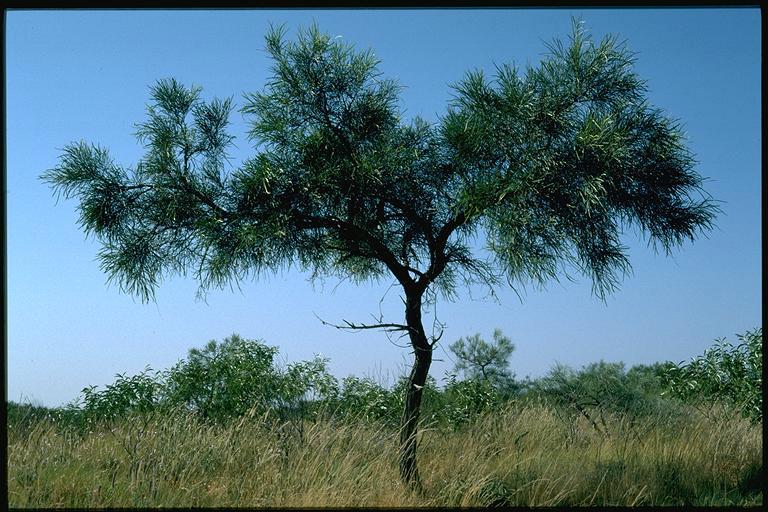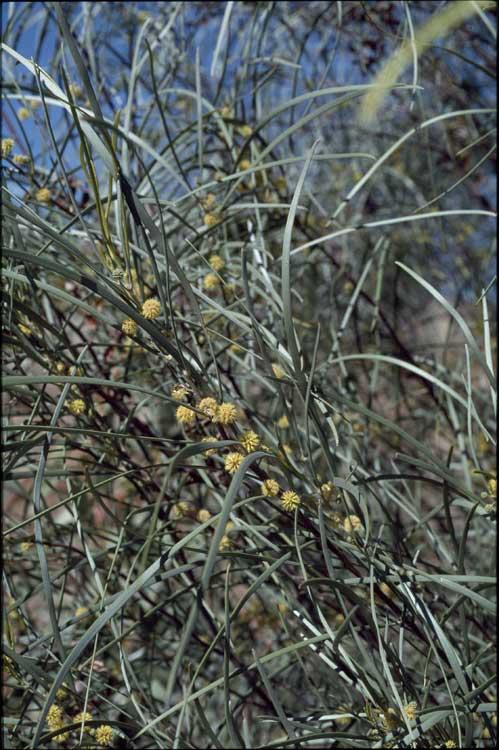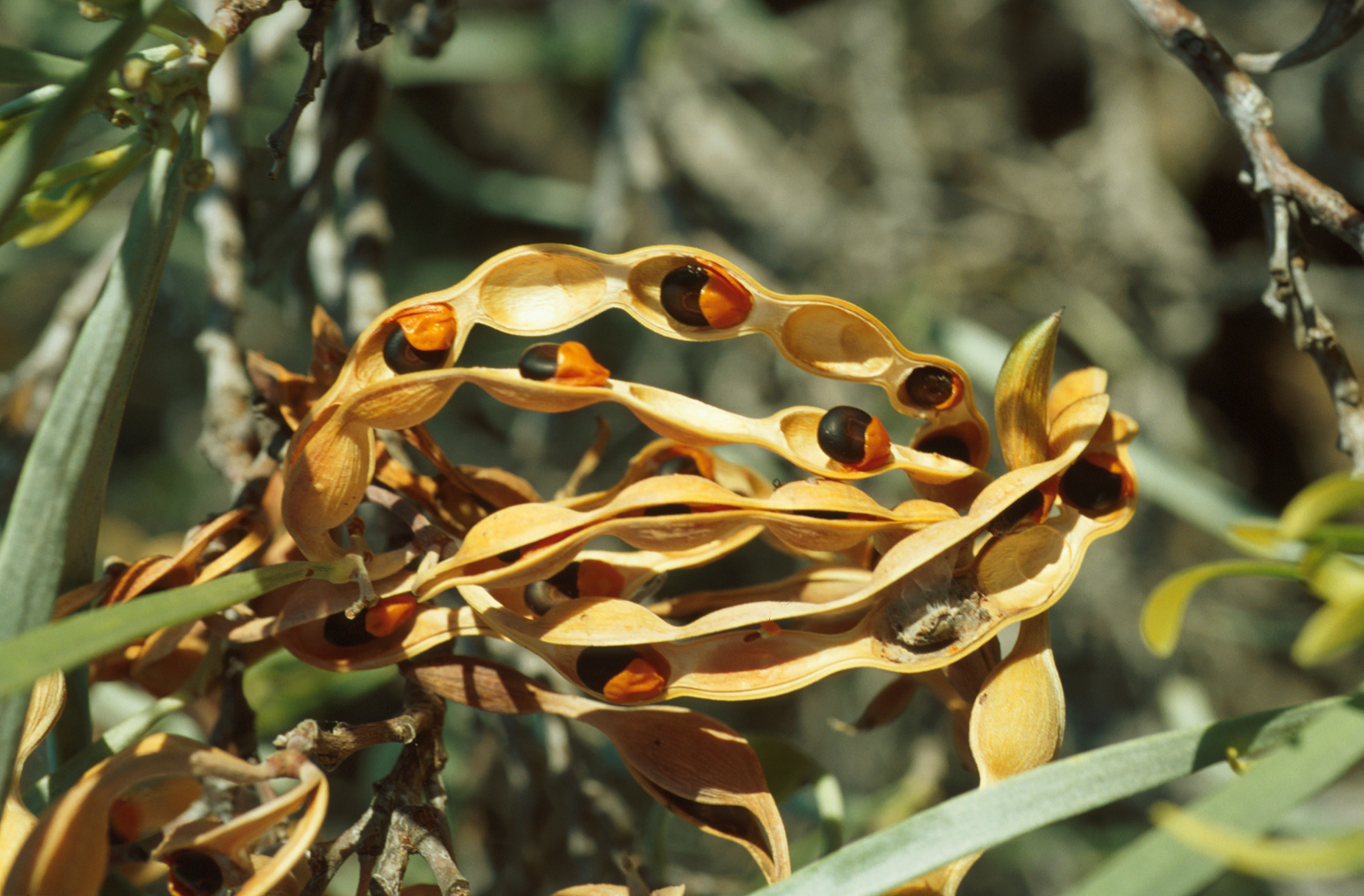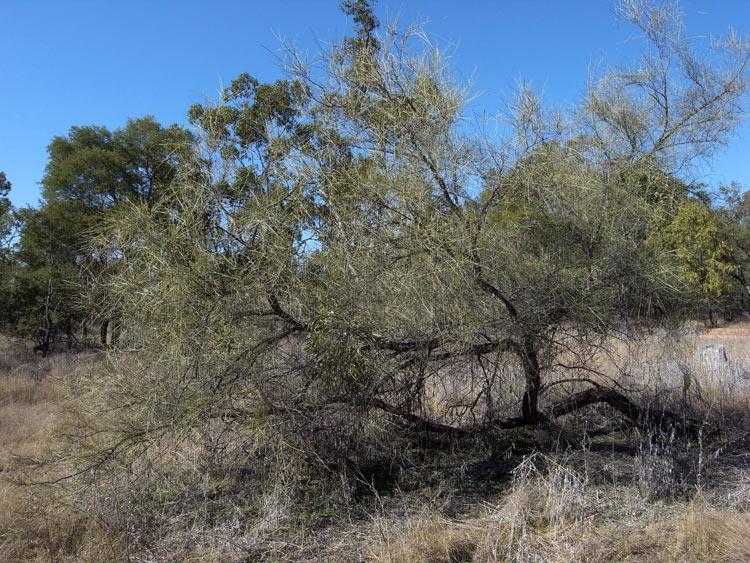! Nouveau site ici !
Vita > Plantae > Magnoliophyta > Magnoliopsida > Fabales >
Fabaceae > Acacia
Acacia coriacea


 | ***
| ***
Vita > Plantae > Magnoliophyta > Magnoliopsida > Fabales >
Fabaceae > Acacia
Acacia coriacea

Présent en Australie, c'est un arbuste à écorce rugueuse utilisé dans la médecine traditionnelle aborigène ; ses graines sont très nutritives.
⬀
Le  donne accès au menu
donne accès au menu (c'est votre point de repère) 😊 ;
En dessous vous avez la classification, à partir de la vie (Vita, premier rang) jusqu'à la classe au dessus de la plante, dont vous trouvez ensuite le nom scientifique/botanique (latin) puis le nom commun (français), le cas échéant ;
C'est aussi un lien vers la fiche complète (tout comme la ✖, en bas à droite, et le +, en dessous de la description) ;
Vient alors l'illustration (ou ce qui la remplace, en attendant), la comestibilité :
Et en bas
⬂

![Illustration Acacia coriacea, Par Mueller [Müller], F.J.H. von, Iconography of Australian species of Acacia (1887-1888) Iconogr. Austral. Acacia, via plantillustrations Illustration Acacia coriacea, Par Mueller [Müller], F.J.H. von, Iconography of Australian species of Acacia (1887-1888) Iconogr. Austral. Acacia, via plantillustrations](../inc/images/illustrations/acacia_coriacea.jpg )









